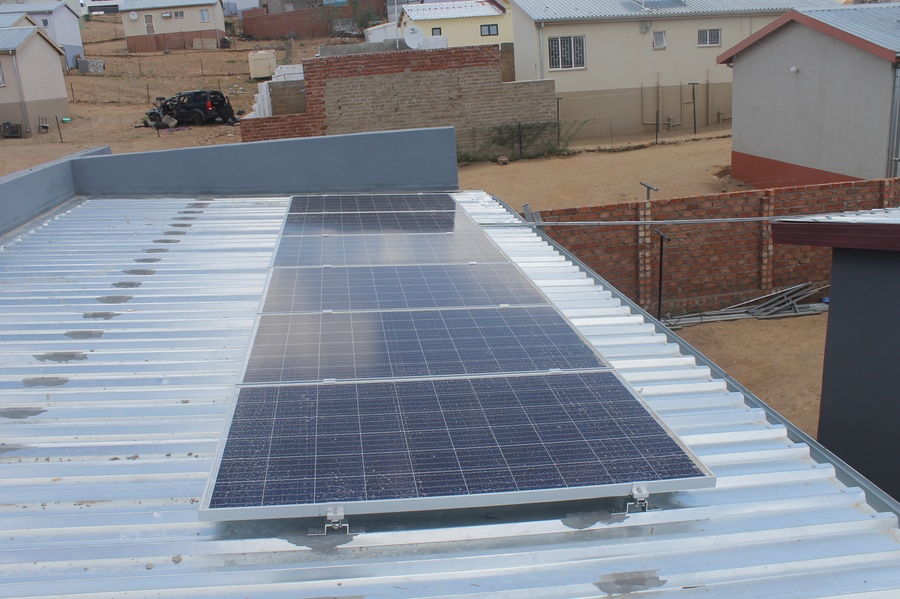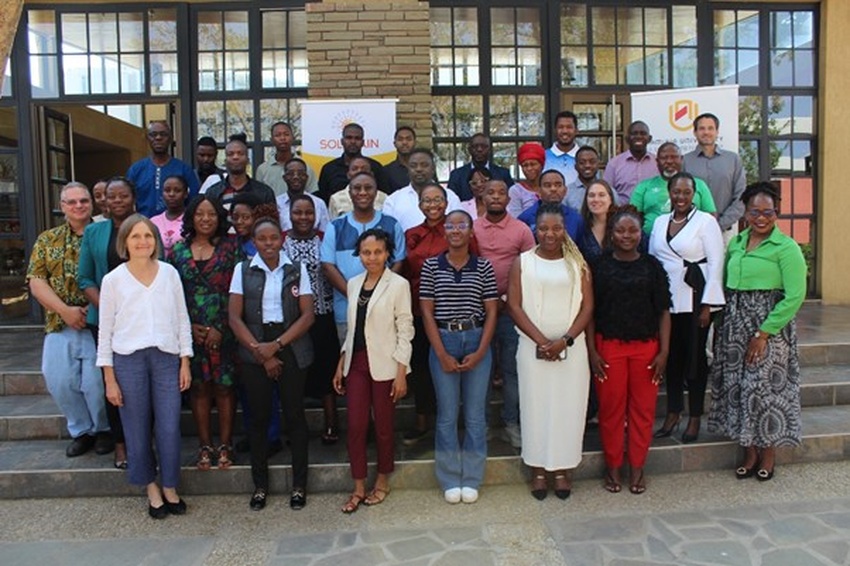The Namibia Energy Institute (NEI), at the Namibia University of Science and Technology together with AEE-INTEC, have installed the first photovoltaic water heater (PWH) in Namibia using a special DC/AC element for heating the water. The installation is for research purposes under the SOLTRAIN project.

Through SOLTRAIN, NEI has already installed 62 solar water heaters (SWH) at low cost houses in Windhoek’s Otjomuise township between December 2015 and March 2016.
In addition, measurement and verification systems were installed at six houses, four of which had SWH installed while the other two used electrical geysers, and data has been collected and analyzed at these houses since 2016. The installation of PWH now takes the research a step further.
The PWH installation consists of six solar PV modules with a cumulative 1.59kWp capacity which are connected directly to a resistive element for heating a 300l tank using direct current (DC) without an inverter. The element is also able to operate from the house mains AC supply as a backup for when there is not sufficient sun to power the element with solar.
The PWH system was installed at one of the houses which was previously monitored using a standard electrical geyser. Another house, which also used an electrical geyser and which was also previously monitored, was equipped with a thermosyphon unit consisting of a 300l tank and 4m2 collector. Both systems were designed based on the hot water demand per person in the respective houses as analyzed for one year.
This provides a comprehensive research platform for the comparison of SWH and PWH in Namibia, the results of which will be highly informative for both the housing and energy sectors in the country. In addition, the pilot project also be aims at exploring the possibility of adopting the photovoltaic water heating system in off-grid areas where it could be used to provide basic electricity needs including the provision of hot water.
Senior Shimhanda, a Master of Environmental Engineering student at NUS, with a specialization in renewable energy systems, is working with NEI as an intern to work on the pilot project as part of his final research to complete his Masters thesis. He was directly involved in the installation of the two systems and monitoring equipment, and will also collect and analyse the data.
According to Shimhanda, “it is essential to conduct a techno-economic analysis of the existing water heating systems in the Namibian context in order to determine the best domestic water heating technology between SWH and photovoltaic water heating. The outcome of the research will help prospective Namibian consumers choose the most efficient and cost effective solution between SWH and PWH”.
Shimhanda added that the research into the SWH and the PWH aims to answer the following questions:
- Whether existing water heating systems are viable technically and economically
- Their possible impacts on the environment
- The initial capital costs and operation costs of each water heating system
- Which technology is more cost-effective in terms of performance and economic benefits and;
- Which technology is more efficient and less prone to intermittent weather fluctuations.
Mr Nicolas Marembo, the owner of the PWH system who also contributed to its cost, was trained on the functionality of the system and reports that he is happy with the system so far.









